Angela Sutherland – AncientPages.com – The temple was built on the banks of a large artificial lake and sponsored by King Vishnuvardhan of the Hoysala Empire, located in today’s modern state of Karnataka. Vishnuvardhan was not only a skilled warrior, ambitious monarch but also a great builder.
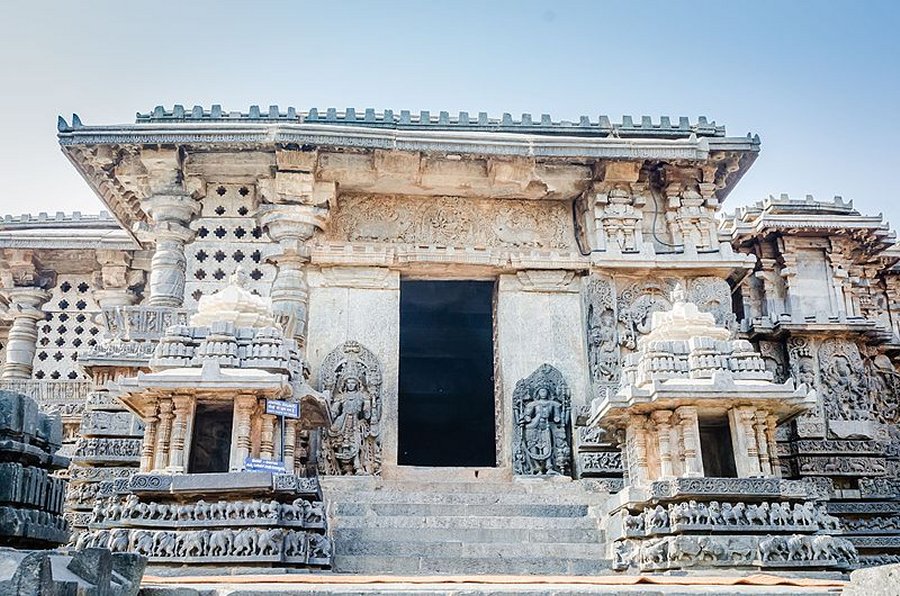
The temple is also dubbed the Halebidu temple. Image credit: Ashwin Kumar – CC BY-SA 2.0
Dedicated to the Hindu god Shiva, Hoysaleswara Temple, believed to have been built in the 12th century.
The beauty of this temple (also dubbed the Halebidu temple) was destroyed during the early 14th century when the capital of the Hoysala Empire was twice sacked and plundered by Muslim invaders from northern India (Khilji dynasty and Tughlaq dynasty of Delhi Sultanate.
This sacred structure is a twin temple dedicated to Hoysaleswara and Santaleswara Shiva lingam (the universal symbol of Lord Shiva), named after the masculine and feminine aspects. The temple has the idols of Hoysaleswara (named after King Vishnuvardhana Hoysala) and Santaleswara (after his wife, Queen Santala).
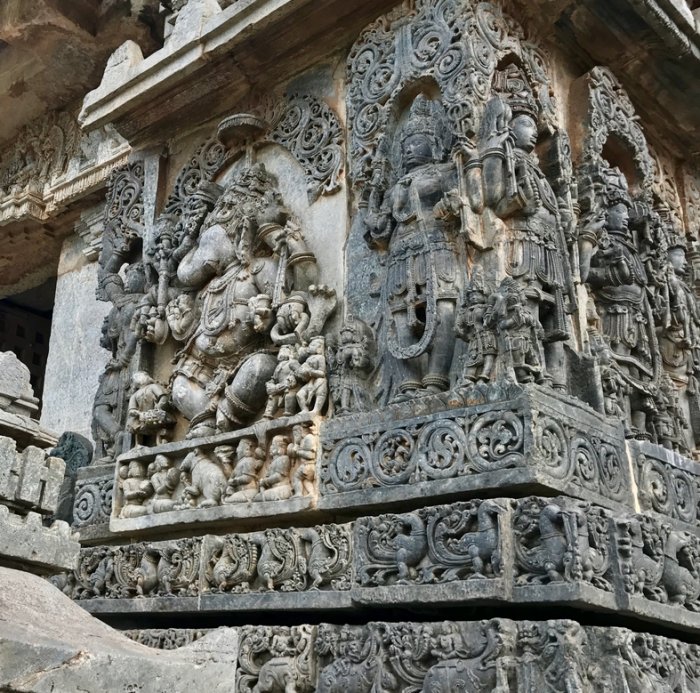
The Hoysaleswara Hindu temple is dedicated to Shiva. Image credit: Ms Sarah Welch – CC BY-SA 4.0
The temple belongs to the Shaivism tradition of Hinduism. Yet, it also includes traditions of Vaishnavism (centered around Hindu god Vishnu and his avatars,) Shaktism tradition legends and ideas, and Jainism.
Elaborate Reliefs, Friezes, Shiva Linga, And Shrines Of Nandi
The temple was carved from soapstone and once had beautiful towers that unfortunately no longer exist. However, this sacred structure still has many beautiful sculptures and intricate smaller and larger reliefs, detailed friezes, which all play an important role, though many of them are damaged.
Soapstone is a very soft building material that enables artisans to create detailed sculptures and relief carvings.
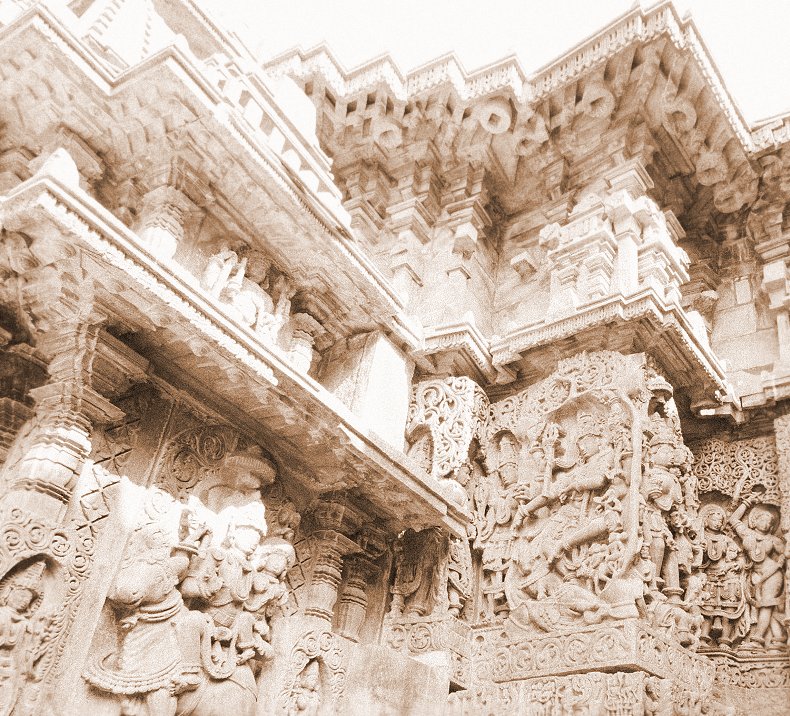
Hoysaleswara Temple. Image credit: Ashwin Kumar – CC BY-SA 2.0
Besides the other shrines, there is one shrine dedicated to Hindu Sun god Surya depicted in the 7 ft tall image. The temple halls are decorated with gigantic sculptures of the bull Nandi, the attendant of Lord Shiva, and the god’s sacred vahana (“mount”) identified as a vehicle. In the Hindu religion, Nandi is the gate-guardian deity of Kailash, the home of Lord Shiva. Among other examples of the Hoysala architecture’s typical representations are beautifully decorated internal, monolithic, and multi-faceted stone pillars with circular rings carved on them.
The temple’s 340 large reliefs depict the Hindu beliefs in ᴀssociated legends. They have a deep religious meaning. Numerous smaller friezes narrate Hindu texts such as the Mahabharata, the Ramayana, and the Bhagavata Purana.
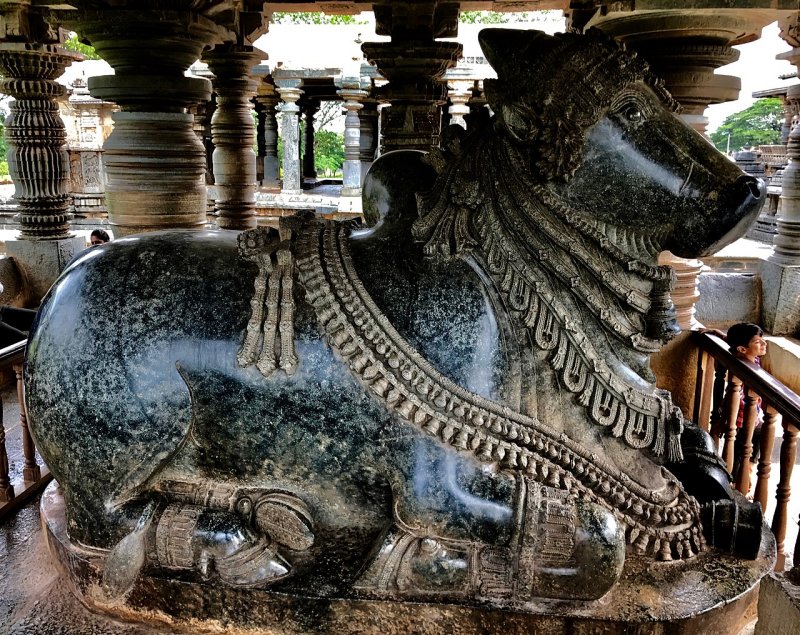
Nandi shrine in the north. Image credit: Ms Sarah Welch – CC BY-SA 4.0
The sculptures depict religious and cultural events, goddesses, gods, victorious moments, and wars. They include dance and music, processions, hunting, and games, showing people’s garments, jewelry, and daily lives.
Vedic deities such as Agni, Indra, various avatars of Vishnu, the Hindu goddesses such as Saraswati, Lakshmi avatars, Rama fighting Ravana, who believed he was invincible even in this ᴅᴇᴀᴅly confrontation with the god Rama. Still, finally, in retaliation, Rama killed the demon Ravana with an arrow through the heart of the demon king, according to the Ramayana.
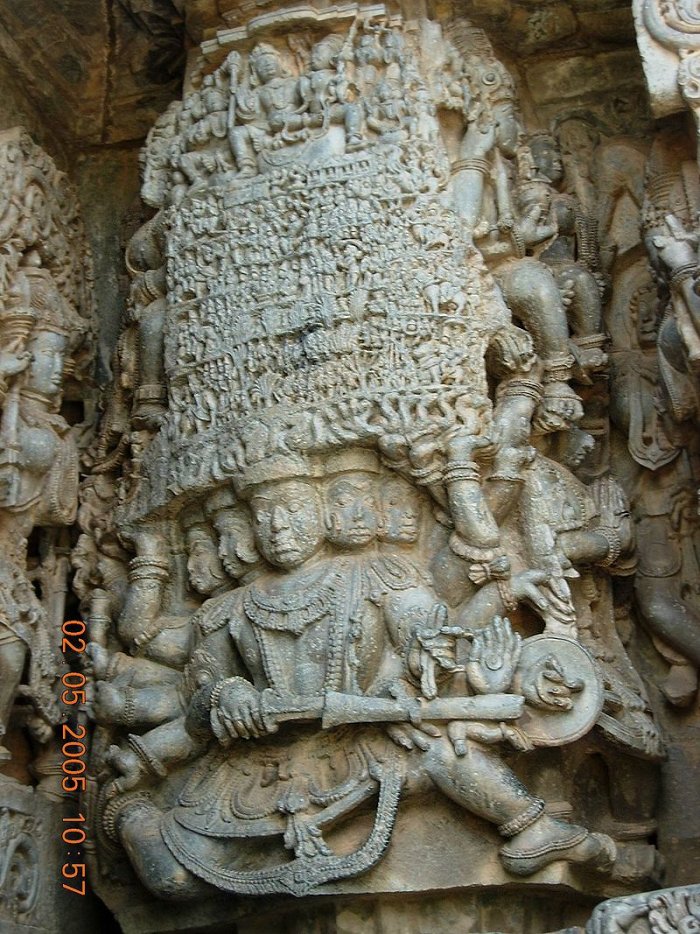
Ravana is carrying Mount Kailash – Hoysaleswara temple, Halebid. Image credit: Venkygrams – CC BY-SA 4.0
Also, many other divinities are present in the Hoysaleswara Temple, and they have all stories to tell.
These sculptures are rich with religious and cultural iconography depicting gods and goddesses, wars and victories, dance and music, hunting, games, processions, and the dress, jewelry, and daily life of people.
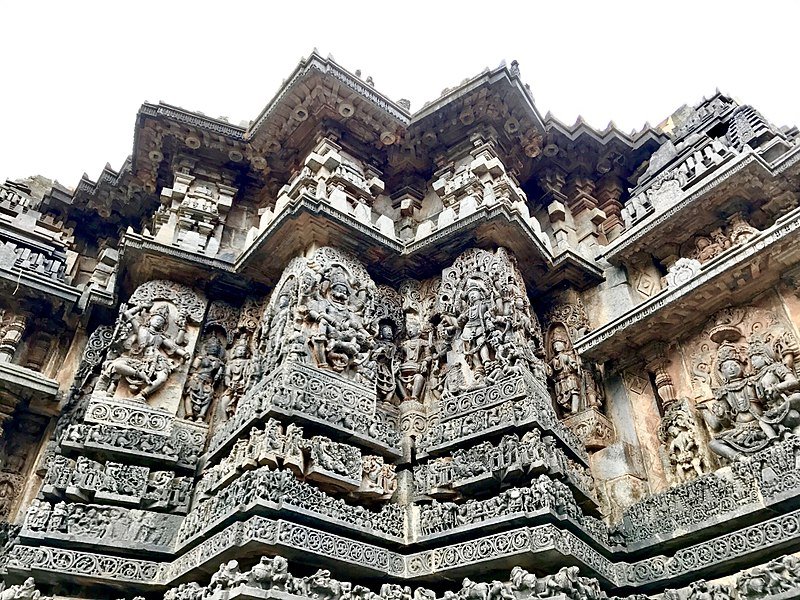
Sculptures on Hoysaleswara temple. Image credit: IM3847 – CC BY-SA 4.0
“The exterior walls of Hoysala temples are lined with multiple layered friezes (often numbering up to six) depicting animals and figures in the processional movement. The detail of sculptural forms is exceptionally high. These friezes are a highlight of the Hoysala style.” 1
Interestingly, “depicted stories or events are always told from right to left, such that they enable clockwise circumambulation of the temple. Pierced stone screens control all light access into the temple structure.” 1
Though it is currently visited from the north side, the temple faces east, and the temple’s artwork presents the life and culture dated to 12th century South India.
Thanks to the skilled Hoysala artists, noted for their sculptural details, the artwork seems to be alive with all fascinating themes from the Hindu epics and deities and motifs such as Yali, kirtimukha (gargoyles), miniature decorative towers on pilaster, Makara (aquatic monster), birds, animals such as lions, elephants, and horses.
Written by – A. Sutherland – AncientPages.com Senior Staff Writer
Copyright © AncientPages.com All rights reserved. This material may not be published, broadcast, rewritten or redistributed in whole or part without the express written permission of AncientPages.com
Expand for references
- Raezer, D. Raezer, J. India Revealed
UNESCO





